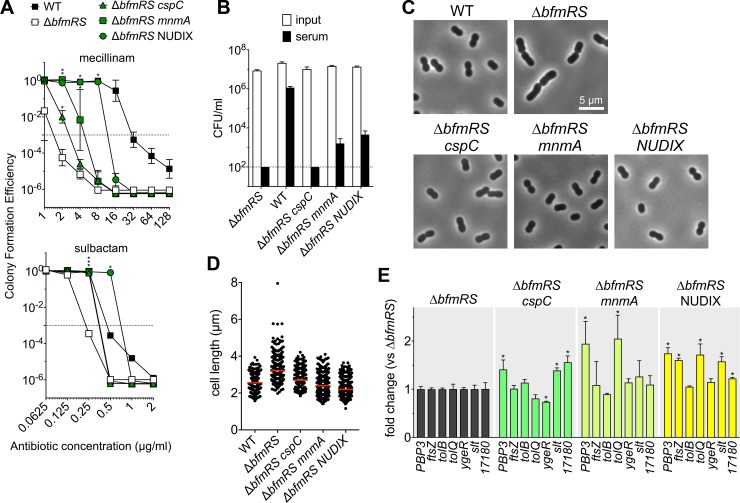Fig 8. Hypersensitivity to antibiotics and serum killing of ΔbfmRS strain can be bypassed by mutations that affect control of cell morphogenesis.
Spontaneous mutants derived from ΔbfmRS were isolated after selection with mecillinam or imipenem, and three isolates were analyzed for BfmRS-dependent phenotypes: EGA534 [ΔbfmRS cspC(G17AfsX21)], EGA555 [ΔbfmRS mnmA(G362S)], and EGA552 [ΔbfmRS ACX60_RS05385/(NUDIX)::ISAba1]. (A) Strains were tested for antibiotic resistance by CFE assay. Data points show geometric mean ± s.d. (mecillinam, n = 4; sulbactam, n = 2). *, P < 0.015 in unpaired t-tests comparing mutant vs WT; asterisks were stacked in the case of overlapping symbols. (B) Ability to withstand complement-mediated killing in serum was examined as in Fig 1. Lines show mean ± s.d. (n = 3). The limit of detection is indicated by the dotted line. (C) Cellular morphology of ΔbfmRS suppressor mutants. Bacteria were grown in antibiotic-free LB medium and imaged via phase-contrast microscopy. (D) Cell length was determined from n > 240 cells per strain. Red lines represent median values. Suppressor mutants differed significantly from ΔbfmRS (P < 0.0001, Mann-Whitney test). (E) Transcript levels were quantified via qPCR, and the fold change in each mutant vs the parental ΔbfmRS strain was determined. Bars show the mean value ± s.d. (n = 3). Bars marked with * had P < 0.05 (unpaired t-tests) and at least 20% difference in mean when comparing each mutant with parental ΔbfmRS.

